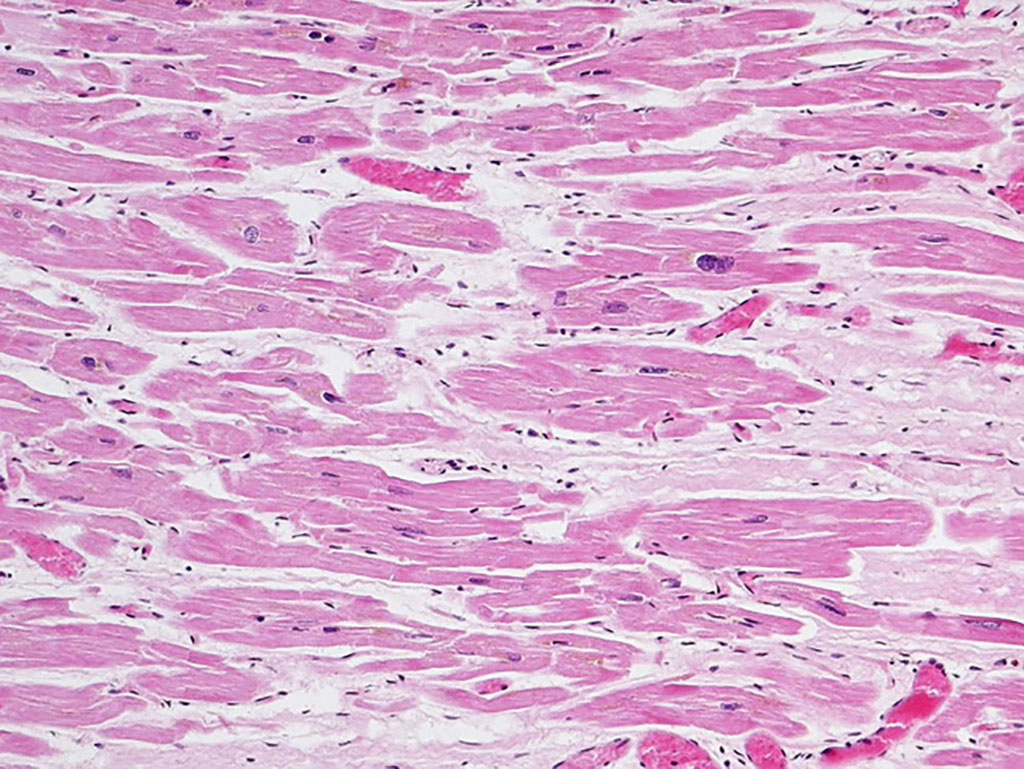Titin-Truncating Variant Associated With Late-Onset Dilated Cardiomyopathy
Posted on 21 Feb 2022
Late-onset dilated cardiomyopathy might represent a distinct disease subtype marked by an increased burden of genetic variants, a new study has found. The findings further suggested that genetic testing may be beneficial for older dilated cardiomyopathy patients.
Dilated cardiomyopathy is a condition in which the heart becomes enlarged and cannot pump blood effectively. Symptoms vary from none to feeling tired, leg swelling, and shortness of breath. It may also result in chest pain or fainting. Complications can include heart failure, heart valve disease, or an irregular heartbeat.

Dilated cardiomyopathy (DCM) is frequently caused by genetic factors. Studies identifying deleterious rare variants have predominantly focused on early-onset cases, and little is known about the genetic underpinnings of the growing numbers of patients with DCM who are diagnosed when they are older than 60 years (i.e., late-onset DCM).
An international team of medical scientists collaborating with Cardiologists at the University of Trieste (Trieste, Italy) investigated the prevalence, type, and prognostic impact of disease-associated rare variants in patients with late-onset DCM. A population of patients with late-onset DCM who had undergone genetic testing in seven international tertiary referral centers worldwide were enrolled from March 1990 to August 2020. A positive genotype was defined as the presence of pathogenic or likely pathogenic (P/LP) variants. A total of 184 patients older than 60 years were studied, that included 103 female (56%); age, 67 ± 6 years; left ventricular ejection fraction, 32% ± 10%.
The investigators reported that the most common variants in this cohort were a Titin-truncating variant (TTNtvs), which affected 46 patients, or 69% of those with a genetic diagnosis. TTNtvs appeared nearly twice as common among this late-onset dilated cardiomyopathy cohort as has been reported among younger-onset dilated cardiomyopathy cohorts. The remaining 20 cases had other P/LP variants (motor sarcomeric genes, 8%; LMNA, 6%; FLNC, 6%; desmosomal genes, 6%, and other variants, 3%). Investigators observed patients with positive genetic testing more frequently had a family history of DCM compared to patients with negative genetic testing (76% versus 59%). During a median (interquartile range) follow-up of 42 (10-115) months, 23 patients (13%) died; 17 (25%) of these were carriers of P/LP variants, while six patients (5.1%) were genotype-negative.
The authors concluded that late-onset DCM might represent a distinct subgroup characterized by and a high genetic variation burden, largely due to titin-truncating variants. Patients with a positive genetic test had higher mortality than genotype-negative patients. These findings support the extended use of genetic testing also in older patients. The study was published on February 9, 2022 in the journal JAMA Cardiology.
Related Links:
University of Trieste










 (3) (1).png)



